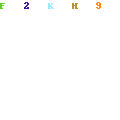 1. Dress up as a character!
1. Dress up as a character!By far, this strategy gets a reaction from students. Young and old, too-cool-for-school and comfortable being goofy, boy or girl - all students notice this. While some might try to play it off or laugh out of comfortableness, you will show your passion for reading, and students will respond to it.
2. Make a Space
This works for both the home and the classroom: Make a comfortable space where students can relax and focus on reading. I've seen students trod into my classroom, negative body language flying, but they then transform as they cross the room to my reading corner, grab a cushion, and settle in with a book. You can see the gloom and tension melt away. The transformation is palpable. That comfortable, safe space provides so much more than a place to read.
3. Make A Connection
 |
| Tastier than Fried Worms? |
You might want to take a more abstract approach (substitute gummy worms for real worms), or get creative ans build a scene with food (angry grape people). However you do it, food makes reading fun!
Reading becomes much more exciting when kids can see your passion, when they can relax and enjoy it, and when they see how reading relates to their lives.
Here are a few of the articles and blogs I read when brainstorming: The Cornerstone, Edudemic, Million Words Campaign, University of Tennessee, and Imagine Learning.
What are your favorite ideas and activities to get kids excited about reading? Share in the comments below and feel free to include a link to your own blog post on the topic.







